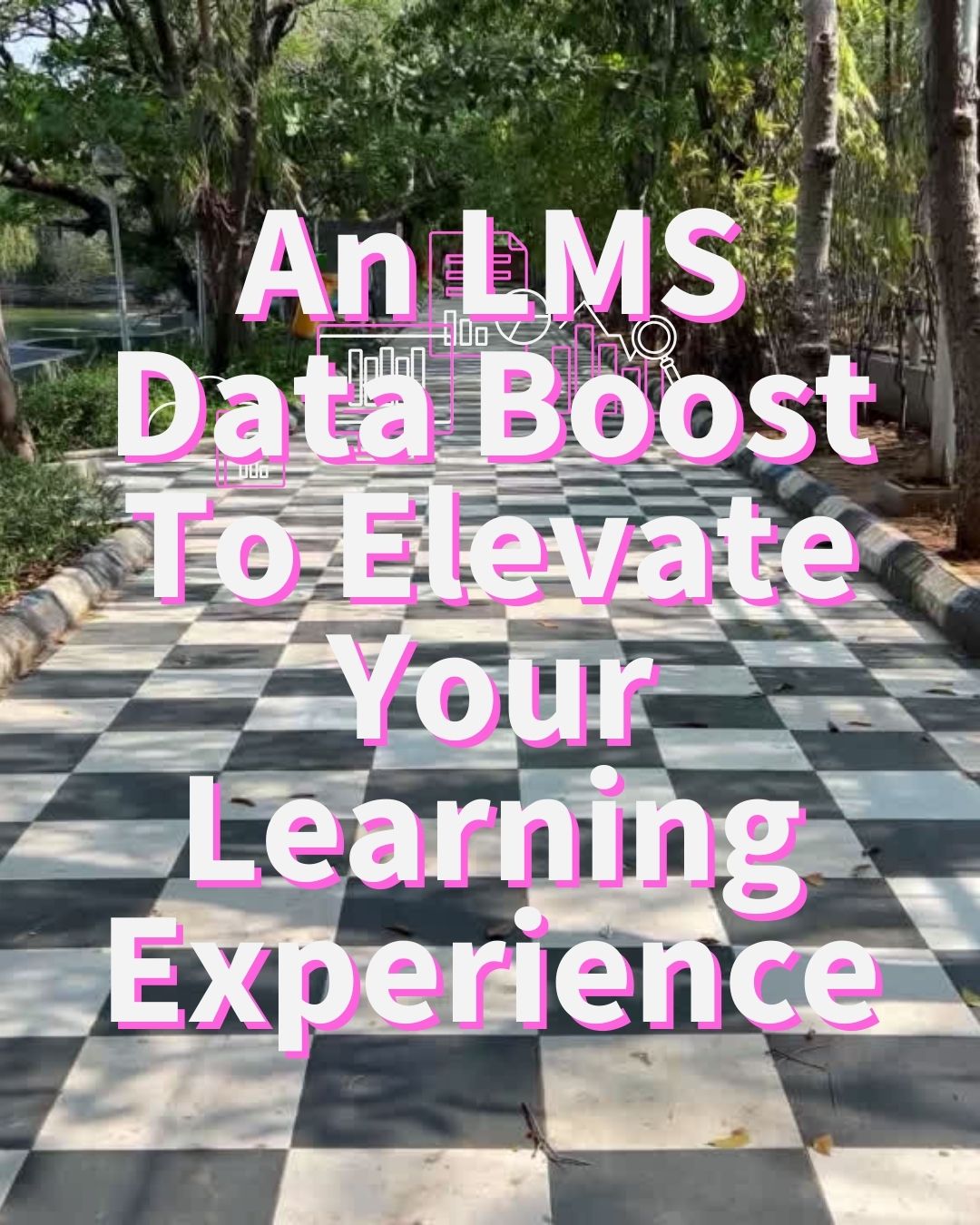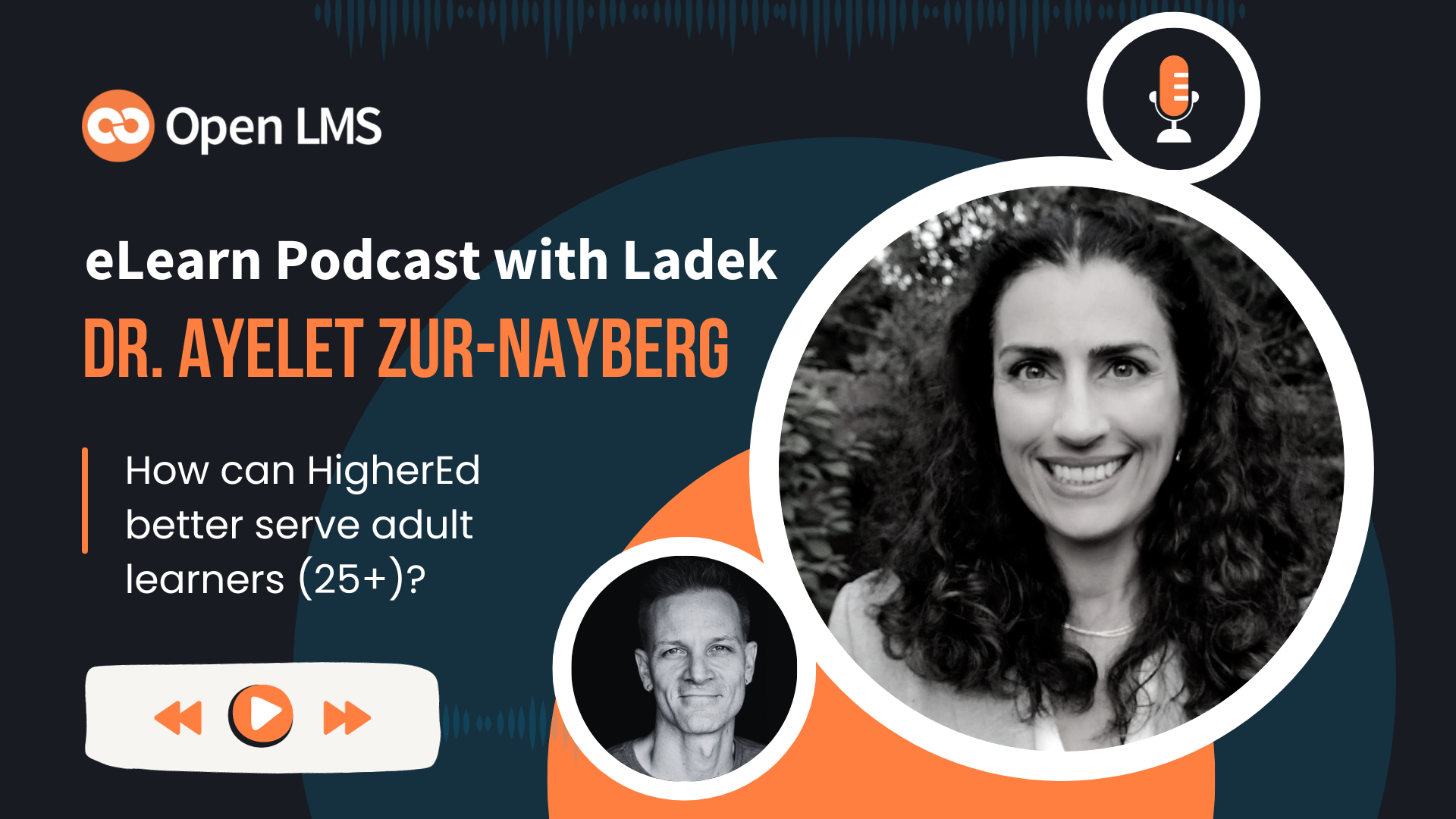This article is written in collaboration with Ninja Tropic and eLearn Magazine.
eLearning Professionals often picture the Learning Management System (LMS) at the core that powers learning experiences. But the LMS reveals another side: It is a data powerhouse. It can store, report and visualize data about your learners and content. It can guide your decisions, helping you achieve alignment with higher-end goals, enhance the experience and drive better business outcomes.
In this guide, we aim to offer an expanded perspective of what an LMS can deliver thanks to its data capabilities. We will walk you through the process of getting real value from your LMS data, using it to improve your decision-making, and share real examples to illustrate how you can enhance your learning experience in practical ways.
Let’s get started!
LMS data: A key eLearning ally
LMS is a data repository, brimming with valuable information. From student attendance and performance, to assessment results and even learner engagement, you can be sure to find critical data points to inform your practice.
Of course, it is not always straightforward to turn data into insights. Which is why you need to equip yourself with a couple of helpful “tools” that will make your work with data, well, insightful. The types of tools we’re referring to include:
- Asking good questions. Think about the end goal of your learning, or your organization’s mission and desired outcomes. Start broadly, with something like “How can this data help?,” then dive into increasingly specific questions, until you start to visualize a direct link between new information and new decisions you can make to improve your processes.
- Data literacy. We all know that having at least a basic understanding of math and statistics is a professional advantage in every field and industry. Today, with AI and increasing automation, these do not lose importance. Quite the contrary. According to a Coursera for Business report, skills like reading and analyzing data, or leveraging data to tell a story or present an argument, are more in-demand than ever before.
- User behavior, with an emphasis on learning experience (LX or LXD). As a subfield of psychology, Learning Experience Design is a promising area for everyone interested in digital and web experiences, educators being no exception. This also means LX is not an exact science, which in practice means that, for example, a low engagement rate could have several possible explanations.
Within the LMS, various metrics offer insights into different aspects of the learning process, and the tools mentioned above can set you on the right path. Course completion rates, for example, can highlight the overall effectiveness of your courses. If these rates are low, it might be an indication that the course content isn’t engaging enough, or it’s too lengthy; or it could also affect a specific group of students with unique learning needs or just connectivity issues.
There is no shortage of examples about interesting correlations in education: Assessment scores are meant to reflect how well your instructional materials are meeting the learning objectives. Linking performance with metrics such as login frequency, or user engagement in given activities, can give you clues about focus areas of attention that would increase outcomes, again, either overall or for a student segment.
Getting started: Planning for data and analytics (remember the human)
Planning for data and analytics is the almost-mandatory first step when it comes to turning LMS data into insights and better decision-making. In an ideal world, this step would be part of an initial LMS implementation process, as it can ensure you have the metrics that drive your organizational learning objectives, such as course completion rates, learner engagement, assessment scores, and user feedback.
While these metrics should be identified as early in the implementation phase as possible, to ensure that you have the capability to track and report them effectively, most modern LMS feature robust architectures that automatically capture all the above information out of the box.
Next up, it is essential to establish a system for regular analysis and reporting, integrating them into continuous improvement plans for both content and user experience. This system is made of both software and humans. By prioritizing analytics planning from the outset, you can harness the full potential of your LMS data; and by involving the right people you can ensure the system will ensure there are people tasked with tailoring learning paths, identifying areas for improvement, and ultimately enhancing the overall effectiveness of your programs, all based on objective information.
Turning LMS into enhanced decision-making, learning outcomes
Interpreting LMS data to measure educational results is an art that goes beyond mere number-crunching. Deciphering what they represent about learner behavior and course effectiveness will be made easier the better tools you have.
Think about this example: a pattern of low scores in a particular module might signal a need to revisit the content or the way it is presented, and improving them might be a matter of asking the right questions, grounded in an understanding of learner behavior and answered in a statistically rigorous way. Regularly reviewing quiz and assessment feedback, and taking advantage of reporting and visualization tools, can help in identifying which sections of a course are engaging learners and which sections are not, and whether any changes you make have had an impact.
Let’s look at some examples of how eLearning professionals have made the most of LMS data to improve their courses, provide personalized learning experiences, align outcomes with business goals and more.
Data visualization for preliminary exploration
The way we present data is as crucial as the analysis itself. Data visualization techniques transform complex data sets into clear, easy-to-understand visuals that convey relationships and patterns and can be easily understood by stakeholders from different backgrounds. Interactive dashboards and reporting tools allow for the real-time tracking analytics and KPIs, offering an at-a-glance view of the learning progress across different departments or groups.
Improving course design with data
In a data-driven course design approach, you use data to inform the creation, delivery and refinement of your course. Getting the most of this approach implies both a proactive and reactive mindset. During the creation stage, you include the questions or hypotheses you want to test, and ensure you collect the data that would allow you to properly answer them. During delivery, experimentation with different aspects of the course will help you generate useful data and insight. Try varying the types of multimedia used, the length of each lesson, or the types of activities and assessments. And of course, make sure the data for each specific variant is properly collected, comparable and made useful.
Personalizing learning experiences
Data from your LMS can be a powerful tool, not just for a sequential learning loop. By considering different scenarios related to the diversity of your learners and their preference, you can provide personalized experiences based on data. This approach is also considered data-driven design, only with a focus on the automation and individual approach. With the use of algorithms, you can provide content that caters to the unique needs and preferences of each student, implementing adaptive learning paths in real-time. As long as you can offer a comprehensive set of educational content —not a small feat by any means—, you should be able to reap benefits in a more or less automated way, relatively quickly.
Strategic decision making with LMS data
Beyond course design, LMS data can inform broader educational strategies and business decisions. Analyzing trends over time to make informed decisions and forecasts will improve the way you allocate resources or focus on areas that might need more support. This strategic use of data ensures that your training programs are not just educational, but are also instrumental in driving business success.
Linking LMS data to business outcomes
An important aspect of utilizing LMS data is its alignment with business objectives. Start by identifying your organization’s primary goals. Then, map out how each learning objective within your LMS can contribute to these goals. For example, if improving customer satisfaction is a business goal, the corresponding learning objective might involve enhancing customer service skills. Use LMS data to track the effectiveness of training in this area and measure its impact on customer satisfaction scores.
Consider a company that aims to improve customer service through targeted training programs. By analyzing course completion rates and assessment scores in their LMS, they identify areas in their training that need refinement. After implementing changes based on this data, they would observe an improvement in customer satisfaction scores, thereby illustrating a correlation between effective training and business outcomes.
Advanced LMS data analysis techniques
As you grow more comfortable with data analysis, consider exploring advanced techniques like predictive analytics. These methods can provide deeper insights, helping you to anticipate trends and craft forward-looking learning strategies. Common predictive analytics techniques today employ machine learning algorithms to forecast trends and outcomes. With quality historical data and properly tuned models, predictive analytics can represent a new level in learner performance management, alignment and overall educational and business outcomes.
A common predictive analytics technique is sentiment analysis, which involves analyzing vast amounts of data in a short time, to gauge the overall sentiment or mood of learners. Examples include real-time processing of data from live online classrooms to detect facial expressions in students and gauge their emotions, so the teacher can implement corrective measures right away. While this type of analysis can reveal subtle nuances in learner satisfaction and engagement, providing valuable insights that basic statistical analysis may overlook, it may come at a hefty price tag in terms of infrastructure and technical ability required.
Check out ‘ROI in Learning and ‘ROAI’: A Keep-It-Simple Approach’
Taking things further—and into the future: Big Data, AI and a word on privacy
The eLearning world, with LMS at the core, has evolved quickly in recent years. Organizations with modern LMS running for long have amassed vast amounts of data, often beyond what simple models and algorithms can handle. Real drivers of innovation may lie in the depth of these data lakes. The effective analysis of this data would lead to a comprehensive understanding of the learning process. But how could this be possible?
Enter AI. The newer generations of Artificial Intelligence are set to transform the way organizations work with Big Data. AI can evaluate correlations and implement advanced statistical analysis techniques routinely, provide not just automated reporting, but insights and decision-making advice; generate individualized guidance based on historical information, and overall become a data-driven teaching, design and business assistant.
If developing machine learning algorithms and predictive analytics processes represented a quantum leap over standard reporting, developing AI comes with even more significant hardware and technical requirements. This, added to the speed of evolution of proprietary models, has made people and organizations turn en masse towards proprietary alternatives including ChatGPT, Claude and other specialized generative AI tools.
At the time of writing, these tools are both lauded and feared. Particularly, there are fears involving privacy on the individual an organizational level. We are all currently walking the tightrope between taking advantage of Large Language Models (LLMs) to achieve potentially unprecedented levels of productivity, and ensure data integrity and compliance to regulation.
To summarize, selecting the right process depends on your organization’s specific needs, available technical expertise, and budget considerations. Regardless of the chosen path, the key is to ensure that what you get out of your LMS data is aligned with your organization’s higher purpose.
LMS data is a potent asset in both eLearning and strategic business planning. By effectively extracting, interpreting, and applying these insights, you can create learning experiences that are not only engaging and effective but also aligned with your organization’s strategic objectives. We encourage you to embrace a data-driven mindset to ensure your training programs contribute in meaningful and data-literate ways to your educational and business success.

Written by Erick Prospero, CEO & Diana Amaral, Senior LMS Manager at Ninja Tropic. Erick is a renowned thought leader in the microlearning and corporate training space. Diana is an experienced LMS admin and project manager, knowledgeable in delivering highly engaging training in over a dozen different LMS. Learn more about what Ninja Tropic can do for you









